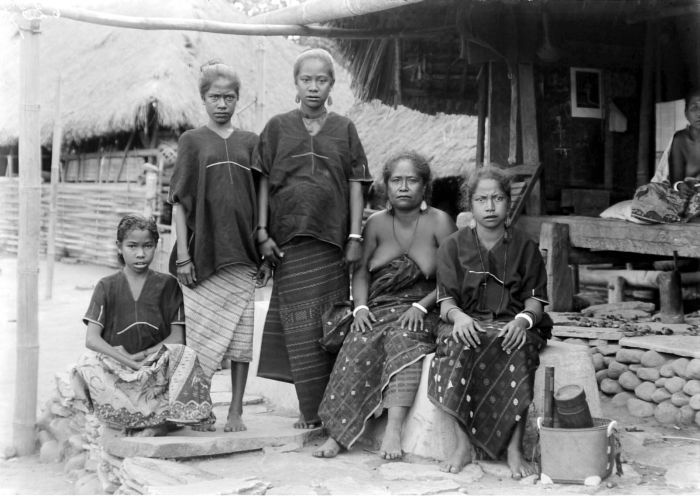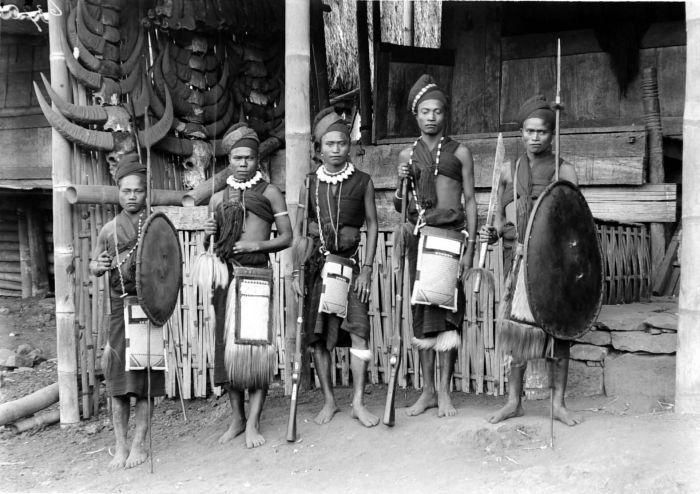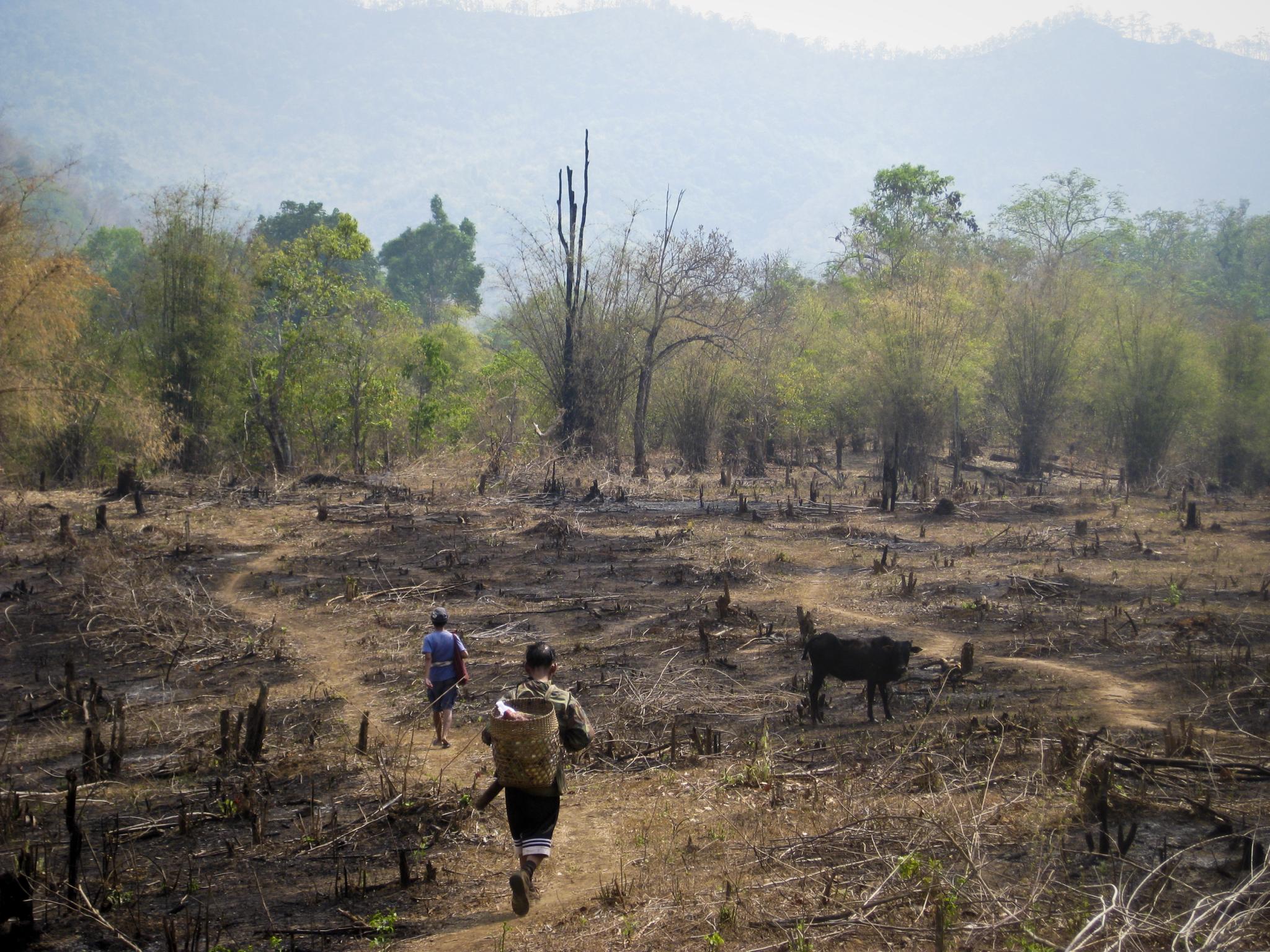|
Nage
The Nage are an indigenous people living on the eastern Indonesian islands of Flores (chiefly in the eponymous Nagekeo Regency), and Timor. They are descended from the indigenous population of Flores They are largely assimilated by the neighboring people. They speak Nage, one of the major languages in the Austronesian languages group. Agriculture The Nage people mainly engaged in manual slash-and-burn farming (tubers, rice, corn), hunting and gathering. Until the middle of the 20th century, communal land ownership with large families participation were still preserved. They live in cumulus-type settlements, located on the slopes of mountains and surrounded by stone walls. Houses are piled up in rectangular position and connected by an open gallery into a single complex, which is intended for joint residence of several large families. Lifestyle The clothes of the Nage people are loincloth and skirt or ''kain''. Women fasten it over the breast, and men around the waist. The diet ... [...More Info...] [...Related Items...] OR: [Wikipedia] [Google] [Baidu] |
Nagekeo Regency
Nagekeo Regency (sometimes written as Nagé Kéo) is a regency on the island of Flores in East Nusa Tenggara province of Indonesia, comprising the territory of the Nage people in the south and of the Kéo people in the north (in Aesesa and Wolowae Districts). It covers an area of 1,398.08 km2 and had a population of 130,120 at the 2010 Census,Biro Pusat Statistik, Jakarta, 2011. and 159,732 at the 2020 Census;Badan Pusat Statistik, Jakarta, 2021. the official estimate as at mid 2024 was 168,355 (comprising 83,187 males and 85,168 females).Badan Pusat Statistik, Jakarta, 28 February 2025, ''Kabupaten Nagekeo Dalam Angka 2025'' (Katalog 1102001.5318) The regency was established on 2 January 2007 by separation of the former eastern districts from Ngada Regency; it has its administrative seat (capital) in the town of Mbay on the north coast of Flores. It is bordered to the west by the residual Ngada Regency and to the east by Ende Regency, while to the north is the Flores Sea a ... [...More Info...] [...Related Items...] OR: [Wikipedia] [Google] [Baidu] |
Nage Language
The Nage are an indigenous people living on the eastern Indonesian islands of Flores (chiefly in the eponymous Nagekeo Regency), and Timor. They are descended from the indigenous population of Flores They are largely assimilated by the neighboring people. They speak Nage, one of the major languages in the Austronesian languages group. Agriculture The Nage people mainly engaged in manual slash-and-burn farming (tubers, rice, corn), hunting and gathering. Until the middle of the 20th century, communal land ownership with large families participation were still preserved. They live in cumulus-type settlements, located on the slopes of mountains and surrounded by stone walls. Houses are piled up in rectangular position and connected by an open gallery into a single complex, which is intended for joint residence of several large families. Lifestyle The clothes of the Nage people are loincloth and skirt or ''kain''. Women fasten it over the breast, and men around the waist. The diet ... [...More Info...] [...Related Items...] OR: [Wikipedia] [Google] [Baidu] |
Flores
Flores is one of the Lesser Sunda Islands, a group of islands in the eastern half of Indonesia. Administratively, it forms the largest island in the East Nusa Tenggara Province. The area is 14,250 km2. Including Komodo and Rinca islands off its west coast (but excluding the Solor Archipelago to the east of Flores), the population was 1,878,875 in the 2020 Census (including various offshore islands); the official estimate as of mid-2024 was 2,014,110.Badan Pusat Statistik, Jakarta, 28 February 2025, ''Provinsi Nusa Tenggara Timur Dalam Angka 2025'' (Katalog-BPS 1102001.53) The largest towns are Ende and Maumere. The name ''Flores'' is of Portuguese origin, meaning "Flowers". Flores is located east of Sumbawa and the Komodo Islands, and west of the Solor Islands and the Alor Archipelago. To the southeast is Timor. To the south, across the Sumba Strait, is Sumba Island, and to the north, beyond the Flores Sea, is Sulawesi. Among all islands containing Indonesia ... [...More Info...] [...Related Items...] OR: [Wikipedia] [Google] [Baidu] |
Ngada Regency
Ngada Regency is one of the regencies on the island of Flores, East Nusa Tenggara Province, Indonesia. It is bordered by East Manggarai Regency to the west and Nagekeo Regency to the east, with the Flores Sea to the north and the Sawu Sea to the south. The Regency, which covers an area of 1,736.83 km2, had a population of 142,254 at the 2010 census,Biro Pusat Statistik, Jakarta, 2011. which increased to 165,254 at the 2020 census;Badan Pusat Statistik, Jakarta, 2021. the official estimate as at mid 2024 was 174,088 (comprising 85,909 males and 88,179 females).Badan Pusat Statistik, Jakarta, 28 February 2025, ''Kabupaten Ngada Dalam Angka 2025'' (Katalog 1102001.5312) The town of Bajawa is the capital of Ngada Regency. History The Ngada Regency is one of the older regencies (''kabupaten'') in East Nusa Tenggara, having been formed in 1958. The regency was split into two on 2 January 2007, with the eastern part being formed into a new Nagekeo Regency. With the separate ... [...More Info...] [...Related Items...] OR: [Wikipedia] [Google] [Baidu] |
East Nusa Tenggara
East Nusa Tenggara (; ) is the southernmost province of Indonesia. It comprises the eastern portion of the Lesser Sunda Islands, facing the Indian Ocean in the south and the Flores Sea in the north, with a total land area of 47,238.07 km2. It consists of more than 500 islands, with the largest ones being Sumba, Flores, and the western part of Timor; the latter shares a land border with the separate nation of East Timor. The province is subdivided into twenty-one regencies and the regency-level city of Kupang, which is the capital and largest city. Archaeological research shows that Liang Bua cave in East Nusa Tenggara has been inhabited by humans since about 190,000 years ago. The site was home to early humans, including ''Homo floresiensis'', who were found in the cave's archaeological layers. East Nusa Tenggara is known for its natural beauty such as Komodo National Park, Labuan Bajo, Lake Kelimutu, and exotic beaches. The province is rich in culture, with diverse tribes, la ... [...More Info...] [...Related Items...] OR: [Wikipedia] [Google] [Baidu] |
Gregory Forth
Gregory L. Forth is a retired professor of anthropology at the University of Alberta. He earned his PhD from University of Oxford in 1980. Beginning in 1986, Forth was a professor at the University of Alberta for over thirty years. Forth is a fellow of the Royal Society of Canada. As a social anthropologist, Forth's position is both structuralist and interpretivist. He is known for his contributions to ethnoscience. Forth has conducted fieldwork in eastern Indonesia, and has worked with the Kéo and Nage of Flores island. In November 2020, his book ''A Dog Pissing at the Edge of a Path: Animal Metaphors in Eastern Indonesian Society'' won the Bookseller/Diagram Prize for Oddest Title of the Year. In February 2023, Forth suggests in his book, ''Between Ape and Human: An Anthropologist on the Trail of a Hidden Hominoid'', based on stories told by natives of Flores, Indonesia, that the diminutive humanoid ''Homo floresiensis ''Homo floresiensis'' , also known as "Flores Man ... [...More Info...] [...Related Items...] OR: [Wikipedia] [Google] [Baidu] |
Proto-Malay
The term Proto-Malay, primeval Malays, proto-Hesperonesians, first-wave Hesperonesians or primeval Hesperonesians, which translates to ''Melayu Asli'' (aboriginal Malay) or ''Melayu Purba'' (ancient Malay) or ''Melayu Tua'' (old Malay), refers to Austronesian speakers who moved from mainland Asia, to the Malay Peninsula and Malay Archipelago in a long series of migrations between 2500 and 1500 BCE, before that of the Deutero-Malays about a thousand years later. The Proto-Malays are descendants of the first humans living in Southeast Asia, and are "ancestral" for humans in east Asia and the Americas. The Proto-Malays are believed to have been seafarers knowledgeable in oceanography who possessed advanced fishing as well as basic agricultural skills. Over the years, they settled in various places and adopted various customs and religions as a result of acculturation and inter-marriage with most of the people they come in contact with such as Orang Asli tribes such as the Seman ... [...More Info...] [...Related Items...] OR: [Wikipedia] [Google] [Baidu] |
Slash-and-burn
Slash-and-burn agriculture is a form of shifting cultivation that involves the cutting and burning of plants in a forest or woodland to create a Field (agriculture), field called a swidden. The method begins by cutting down the trees and woody plants in an area. The downed vegetation, or "slash", is then left to dry, usually right before the rainiest part of the year. Then, the Biomass (ecology), biomass is burned, resulting in a nutrient-rich layer of ash which makes the Soil fertility, soil fertile, as well as temporarily eliminating weed and pest species. After about three to five years, the plot's productivity decreases due to depletion of nutrients along with weed and pest invasion, causing the farmers to abandon the field and move to a new area. The time it takes for a swidden to recover depends on the location and can be as little as five years to more than twenty years, after which the plot can be slashed and burned again, repeating the cycle. In Bangladesh and India, the ... [...More Info...] [...Related Items...] OR: [Wikipedia] [Google] [Baidu] |
Homo Floresiensis
''Homo floresiensis'' , also known as "Flores Man" or "Hobbit" (after Hobbit, the fictional species), is an Extinction, extinct species of small archaic humans that inhabited the island of Flores, Indonesia, until the arrival of Homo sapiens, modern humans about 50,000 years ago. The remains of an individual who would have stood about in height were discovered in 2003 at Liang Bua cave. As of 2015, partial skeletons of 15 individuals have been recovered; this includes one complete skull, referred to as "LB1". ''Homo floresiensis'' is thought to have arrived on Flores around 1.27–1 million years ago. There is debate as to whether ''H. floresiensis'' represents a descendant of Java Man, Javanese ''Homo erectus'' that reduced its body size as a result of insular dwarfism, or whether it represents an otherwise undetected migration of small, ''Australopithecus'' or ''Homo habilis''-grade archaic humans outside of Africa. This hominin was at first considered remarkable for its ... [...More Info...] [...Related Items...] OR: [Wikipedia] [Google] [Baidu] |
Dutch Colonial Service
Dutch or Nederlands commonly refers to: * Something of, from, or related to the Netherlands ** Dutch people as an ethnic group () ** Dutch nationality law, history and regulations of Dutch citizenship () ** Dutch language () * In specific terms, it reflects the Kingdom of the Netherlands ** Dutch Caribbean ** Netherlands Antilles Dutch may also refer to: Places * Dutch, West Virginia, a community in the United States * Pennsylvania Dutch Country People Ethnic groups * Pennsylvania Dutch, a group of early German immigrants to Pennsylvania Specific people * Dutch (nickname), a list of people * Johnny Dutch (born 1989), American hurdler and field athlete * Dutch Schultz (1902–1935), American mobster born Arthur Simon Flegenheimer * Dutch Mantel, ring name of American retired professional wrestler Wayne Maurice Keown (born 1949) * Dutch Savage, ring name of professional wrestler and promoter Frank Stewart (1935–2013) Arts, entertainment, and media Fictional characters * ... [...More Info...] [...Related Items...] OR: [Wikipedia] [Google] [Baidu] |
Agrarianism
Agrarianism is a social philosophy, social and political philosophy that advocates for rural development, a Rural area, rural agricultural lifestyle, family farming, widespread property ownership, and political decentralization. Those who adhere to agrarianism tend to value traditional forms of local community over urban modernity. Agrarian political parties sometimes aim to support the rights and sustainability of small farmers and poor peasants against the wealthy, powerful and famous in society. Philosophy Some scholars suggest that agrarianism espouses the superiority of rural society to urban society and the independent farmer as superior to the paid worker, and sees farming as a way of life that can shape the ideal social values. It stresses the superiority of a simpler rural life in comparison to the complexity of urban life. For example, M. Thomas Inge defines agrarianism by the following basic tenets: * Farming is the sole occupation that offers total independence and S ... [...More Info...] [...Related Items...] OR: [Wikipedia] [Google] [Baidu] |






